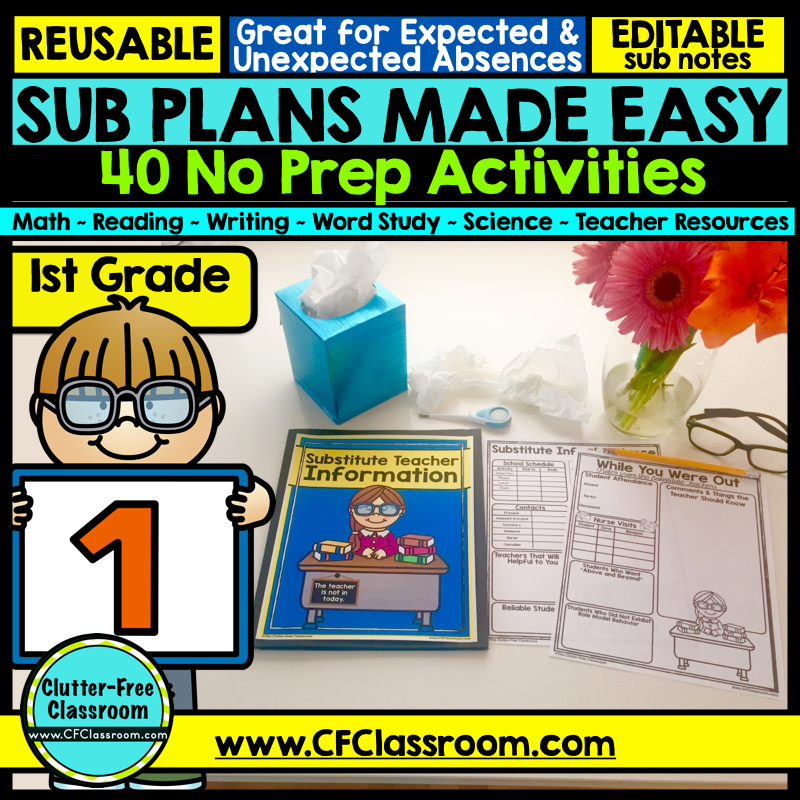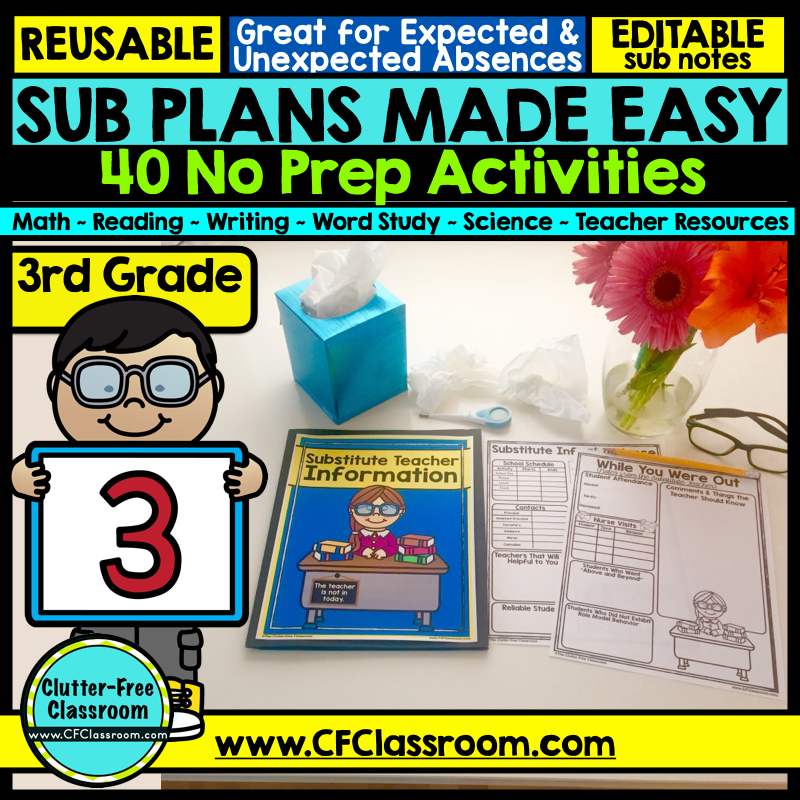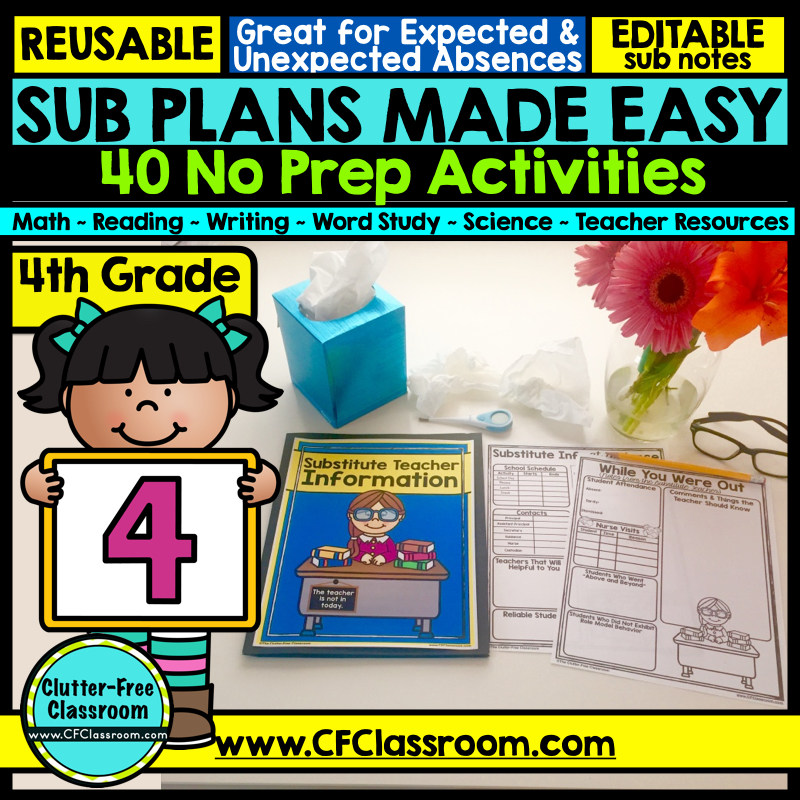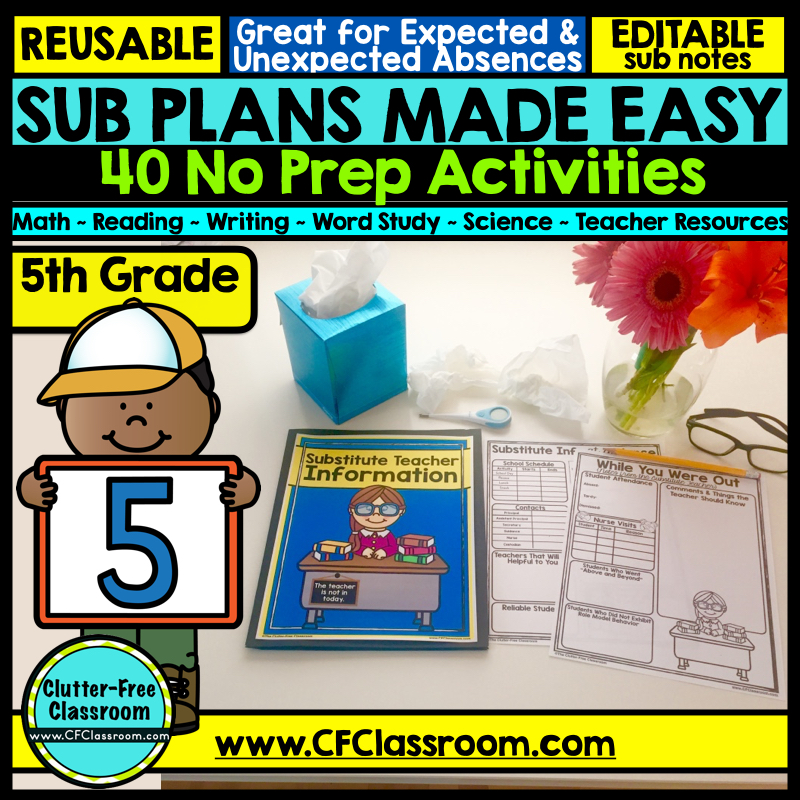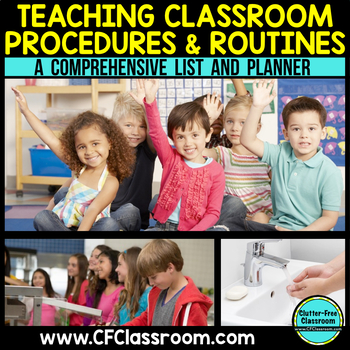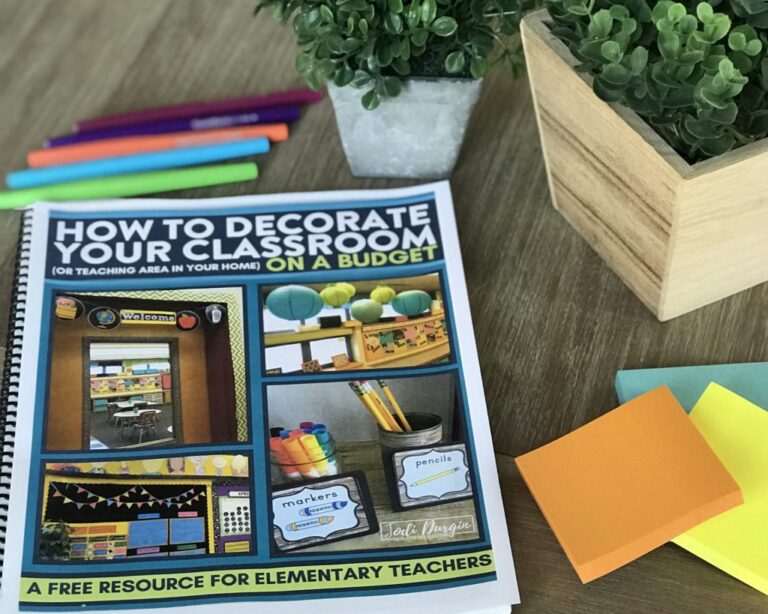
Getting ready for back to school can feel very overwhelming. There are so many things to do! One of the best ways to reduce feeling overwhelmed and come up with a plan, is to make a checklist. We use teacher checklists all of the time! To help you prepare for the beginning of the school year, we created a 20 step checklist that will guide you through a list of tasks you must do to get ready for the new school year.
Before jumping into the list, download this free printable back to school checklist. You can print it out and take notes directly on it as you prepare for the new school year. Also, we recommend you join our Clutter-Free Classroom Facebook Group. It’s a community of thousands of teachers who are eager to answer questions and share ideas. Once you’ve downloaded the checklist and joined the Facebook community, read below to learn our step-by-step process for getting ready for the new school year.
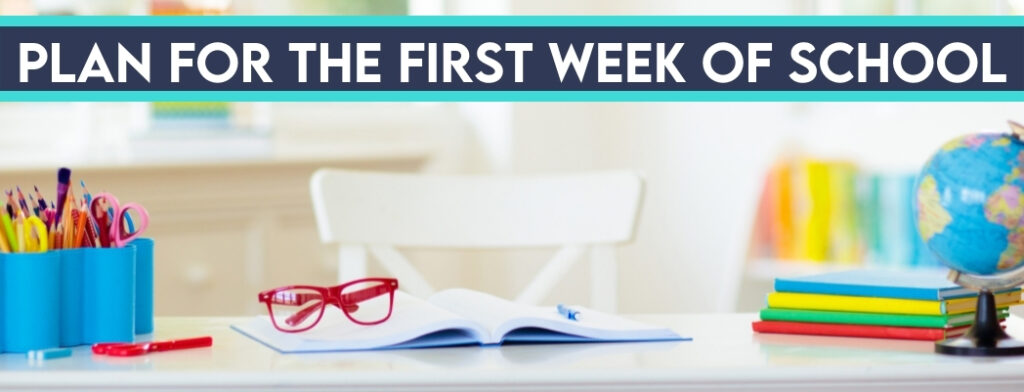
Priority 1: Plan for the First Week of School
Step 1: Plan to Plan
When you think about everything you need to do to prepare for a new school year, it can feel overwhelming. That’s because you do have an unreasonable list of expectations placed upon you. It’s important to realize up front that you simply can’t do it all.
And that’s OK. In fact, it is better than OK!
Because when you fully accept there are only 168 hours in a week, you are forced to prioritize what you will do to prepare for going back to school, and what you will simply let go (without any guilt or stress).
As you work through the 20 steps in the FREE back-to-school teacher checklist that accompanies this series, you’ll notice that we were very purposeful in the sequence of the steps. They are listed in order of priority based on the importance of getting them done. Trust us. We’ve got your back!
To get started there 2 tasks you need to complete.
Time Block Your Weeks
- Figure out how much time you have until school begins.
- List the events you’re already committed to and an estimated time span for each. This will include sleep and meals. It may include classes at the gym, services, parties, sporting events, vacations, etc. It should include things that relax and rejuvenate you like going to the beach, readings, playing with your kids, visiting with friends, etc.
- Now look at the time that is left over and decide these two things.
- how much time you are willing to dedicate to working before your contracted start date
- when and where those blocks of time will take place
- Now that you’ve decided when and where you will be prepping for the new year, treat that as a non-negotiable work schedule and protect the time outside of those blocks as your personal time.
Create a Back to School Binder
I know we live in a digital world, but trust me on this. You need a good, old-fashioned, analog, paper and pencil binder to keep you organized this year, and to save yourself a heck of a lot of time in future years.
- For more information check out our blog post all about creating and using a back to school binder.
- And while you certainly can create your own binder, you may want to check out the back to school organization binder for elementary teachers that we created to save yourself even more time.
Step 2: Plan for the First Day of School
I know when you think about going back to school (and especially if you’re a new teacher), your mind immediately jumps to “setting up the classroom” or “classroom decor.”
Patience, my friend. We’ve learned it is important to prioritize all the items on a teacher’s back to school to-do list and the truth is classroom decor should be the last thing you do. There are several reasons why.
- Once you open that can of worms, and/or set foot into your classroom, you’re going to be down a rabbit hole you simply can’t crawl back out of.
- It doesn’t matter how beautiful your classroom looks, if you don’t have a solid plan in place for the first week of school, you’re setting yourself up for a stressful situation. We’re going to help you avoid that.
- The first day of school sets the tone for the year. Make planning for day one your priority. You’ll be glad you did.
While you have an entire year of lesson planning ahead of you, you’ll want to first focus solely on planning for that very first day of school. Below are what I feel are the top 5 things you should focus on right now.
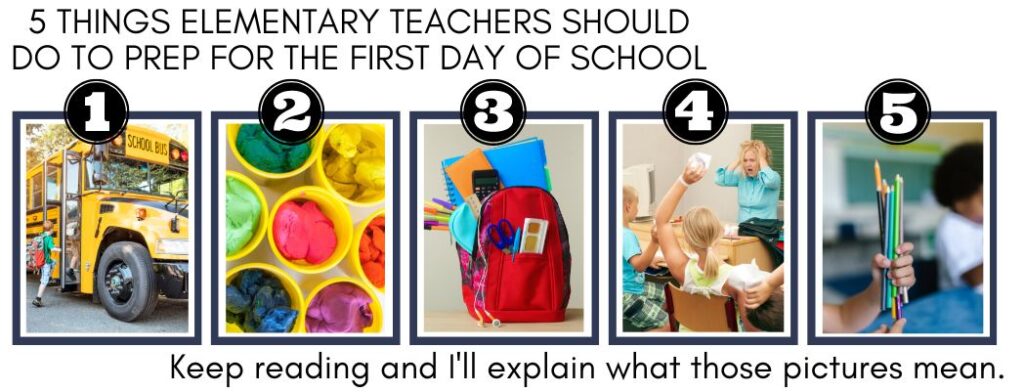
#1 Know how your students will go home.
Don’t assume they know their dismissal method. I suggest setting up a Google form requesting how a child will be dismissed and to whom. Include a link or QR code to that form in a back to school welcome letter or an introductory email. If your school invites families in to meet you before school starts, have a printable form or that QR code ready for families to scan at that time .
I personally called each family a day or two before school began to introduce myself and asked how their child would be going home each day the first week. It did take some time, but that investment really did make the parents feel more comfortable and created a positive relationship right from the start. It also saved me a lot of stress at dismissal.
(For more related tips, check out the Elementary School Dismissal Procedures, Ideas and Resources blog post)
#2 Have a plan in place for a stress-free, no skills needed bellringer or morning work activity.
My number one recommendation (no matter which grade you teach) is play dough. You can buy small containers of it really cheap or make it at home even cheaper. I shared my favorite recipe and a deeper description of how and why I ALWAYS started the first day of school with playdough in a separate blog post titled, First Day of School Activities (and Why Teachers Need Playdough).
#3 Have a plan for collecting student supplies.
If your students will be arriving with school supplies from a list then things will most likely get all kinds of crazy really fast. That is of course unless you have a plan to make the process of collecting school supplies simple, streamlined and organized. I created a perfect solution that checks all of those boxes. In full transparency, it came after way too many chaotic first days of school, but I’ve got you covered. You’ll want to check out what we wrote about “How to Collect Student Supplies on the First Day of School.” Be sure to also grab the freebie we made for you while you’re there.
#4 Introduce the most important procedures and routines.
Taking the time to plan, teach, and practice routines is so important. You can’t have effective classroom management without doing so. However, when done properly, it is possible to have a classroom that runs itself. Procedures and routines are so important that I created an entire resource (Strategies and Tools for Elementary Classroom Management focused solely on that topic that goes deep into explaining how I managed all aspects of my classroom. I’ll be addressing other elementary classroom procedures and routines throughout this series, but for now I want you to think about your most important procedures and make sure they are included in your first day plans. In my opinion they are the following.
- Establish attention getters to calm a noisy classroom.
- Introduce hand signals for classroom management.
- Explain your rules for bathroom procedures (as well as bathroom sign out sheet or bathroom passes if applicable).
- Tell them what is expected of them relating to snacks, lunch and recess.
- Go over what to do if they feel sick (spoiler alert, it should start with “Get Off the Rug!”), and the routine for visiting the school nurse.
Those are the biggies. You need those for survival. Teach those the first day and, as I explain in the Classroom Management Guide for Elementary Teachers, pace yourself on the others.
#5 Overplan activities for the first day of school.
There are a lot of wild cards that go into bringing a group of kids together for the first time. You don’t know them. They don’t know you.
There is a rhythm to a school day that will come with time after your classroom schedule becomes a routine. But at first there will be a lot of trial and error with pacing activities and transitions.
The expectations are not yet clear. The good news though is that there is no pressure to pass a standardized test right out of the gate. Take advantage of that freedom and focus on activities that will let you all get to know each other and start to build a classroom community with your students.
I always made sure to have a lot of activities ready and a stack of books to read aloud throughout the first day. When picking activities, you want to strive for things that can be started and stopped at different intervals of time, are accessible to all students’ abilities, and provide you with the opportunity to learn more about the students as individuals and your new class as a whole.
My go to printables were these getting to know you activities and a packet of worksheets titled, I’m a Third Grader. (By the way, I have differentiated versions of those booklets for K, 1st, 2nd, 4th and 5th available in the Clutter-Free Classroom Teacher Store). I also took a photo of each child using this First Day of School Giant Frame Prop and read several books about the first day of school throughout the morning and afternoon. I encourage you to check out our blog post, First Day of School Picture Books for Elementary Teachers to get a list of titles and ideas for activities to complement the read alouds.
ACTION TASK:
Your action item for this step is to plan for your first day of school. Start by jotting down the books you want to read, procedures you want to teach and activities you want to prepare. Print out anything you’ll need to copy and put it into your Back to School Teacher Organization Binder. Once you get your daily classroom schedule from administration, you’ll simply need to plug in these activities.
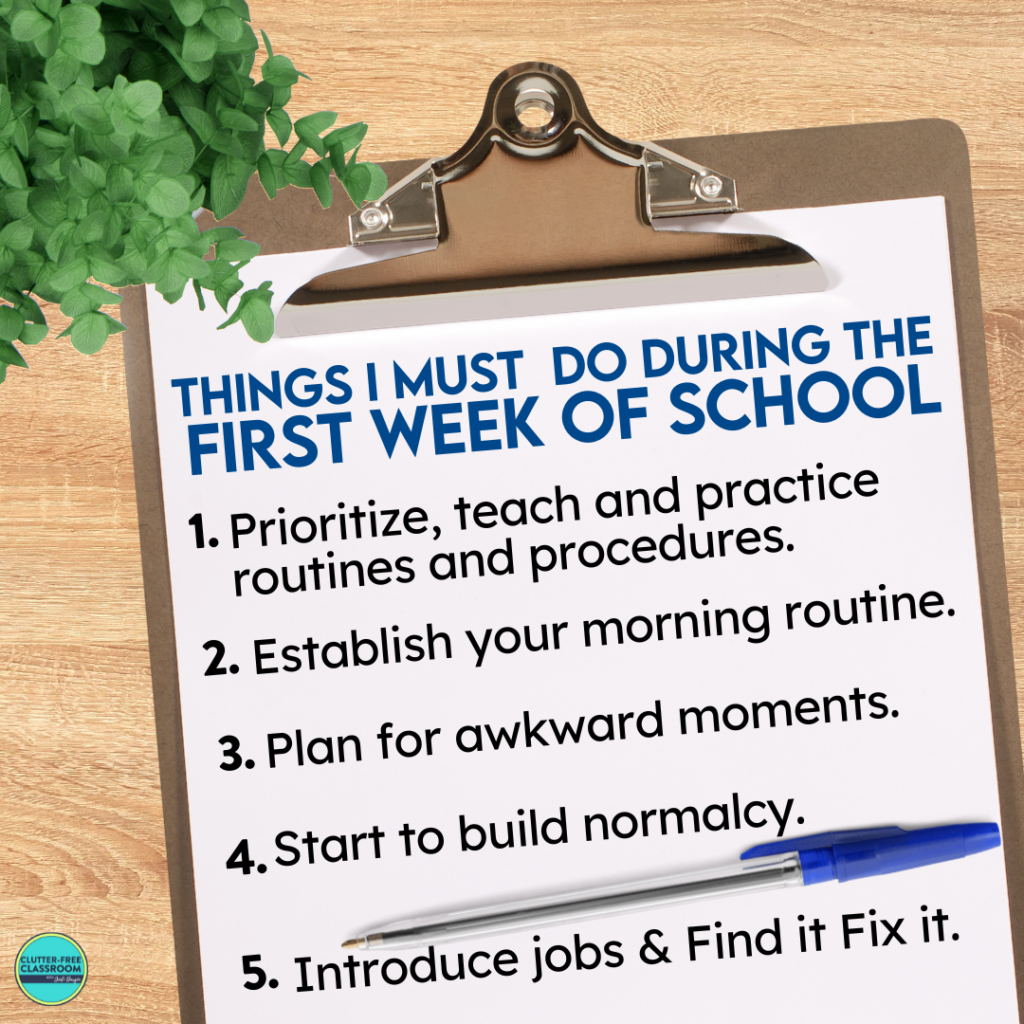
Step 3: Plan for the First Week
Now that you have planned for the first day of school, it’s time to start thinking about the rest of the first week of school. Take some pressure off yourself by acknowledging that you do not need to worry about academics this week. Instead, focus on building community and management routines.
One helpful tip to consider as you are prepping for the first week is to prepare for unexpected new students. You can do this by putting a bag together of things that you would need like a name tag. I’d also recommend numbering your students. This is super helpful as your class list fluctuates.
Check out the full list of things you’ll need to consider when planning the first week out below!

1. Prioritize and Practice Procedures
Some procedures and routines you’ll need to teach the first week of school include:
- math rotations
- managing pencils
- unfinished work
- transitions
- attendance
- emergency drill procedures
2. Establish your Morning Routine
There are so many different morning routine ideas out there. You can incorporate things like:
- number of the day activities
- morning independent reading
- spiral review activities
- writing journal prompts
- math journals
- word problems
- calendar activities
3. Plan for Awkward Moments
The first week of school’s schedule is always irregular. Your students are still acclimating and have not learned all of your procedures and routines, you are still getting to know your students and their work habits, and to top it off, there are school wide assemblies and other special events to kick off the new school year. It can be hard to plan the first week as a result. You are bound to have awkward time increments pop up throughout the day where you need a quick activity to fill it.
Having a collection of printed and prepped back to school activities at your fingertips is so handy! Some of my favorite back to school activities to pull from are my All About Me Printable Booklets. They are available for K, 1st, 2nd, 3rd, 4th and 5th Grade.
4. Start to Build Normalcy
The first day is super exciting and hectic, but you’ll want to spend the rest of the week beginning to build a sense of normalcy for your students. One example is to introduce read alouds and going over the expectations related to it. Be sure to check out this list of back to school read aloud books! Another example is to launch guided math workshop. My guided math workshop resource includes detailed lesson plans for those first couple of weeks of school.
5. Introduce jobs and Find it Fix it
Begin to delegate some of the tasks needed to run your classroom to your students. My two favorite ways to do this is through classroom jobs and a game called Find it and Fix it. When assigning classroom jobs, I recommend think about your students’ strengths and choosing the best person for each job. I also recommend not changing students’ jobs often. This will help your classroom run much more smoothly.
Step 4: Plan to Informally Assess Your Students
As soon as you meet your students, you will begin to informally assess their reading, writing, math, and social emotional skills, as well as their work habits. Formative assessments and informal observations will be key during this time of the year. Read about assessing these different areas below!
5 Ways to Start to Assess Your Students
Below are 5 areas to start to assess at the beginning of the school year.
Reading Skills
When you are reading aloud back to school picture books, make informal observations when asking reading comprehension questions about the story. This will help you begin to gauge students’ reading comprehension skills. Our Starts With a Story collection includes book companions that each have a list of reading comprehension questions to pull from, as well as many other teaching resources (e.g. writing prompts and SEL lesson ideas).
Another reading skill to analyze and informally assess is students’ ability to sustain during independent reading time. This will help you get a better understanding of their stamina and where they are at developmentally.
Writing Skills
My favorite way to assess writing skills at the beginning of the year is through my benchmark writing assessments, which have students write about the season four times per year. At the beginning of the school year, you can either use the summer version or the fall version.
Another great resource for assessing students’ writing informally is through monthly writing prompts. Each month of writing prompts includes prompts based on the following writing types: creative, informative, opinion, narrative, procedural, descriptive, review, persuasive, poetry, and letter writing.
A third resource for assessing students’ writing skills informally is through back to school activities like these All About Me Printable Booklets. You’ll be able to learn so much about students’ writing skills just by looking at the work they produce with these booklets and other back to school activities.
Math Skills
When you launch guided math workshop, you can observe how students use the materials, their attitude toward math, and their confidence. During your workshop, you can also use some of my favorite resources for assessing students’ math skills at the beginning of the year, which include math benchmark assessments, math quick check assessments, and August spiral review math activities.
Social Emotional Skills
The beginning of the year is also a great time to assess students’ social emotional skills. A few ideas to consider are attending the first 15 minutes of students’ lunch, bringing students out for an extra recess, and offering free play time in the classroom. Some things to look for are confidence, speaking skills, interest in others, listening skills, willingness to participate, and how well they work with others.
The beginning of the year is a great time to deliver SEL lessons on growth mindset, compromise, confidence, and friendship. Check out this list of SEL videos!
Work Habits
When you are first getting to know your students at the beginning of the school year, work habits is a great area to observe. You can take notes on and analyze the following work habits:
- frustration levels during difficult tasks
- time-management skills
- level of independence
- ability to follow directions
- willingness to take risks
- how they handle mistakes
Step 5: Plan to Build Community
My favorite ways to build community at the beginning of the school year is through implementing icebreakers, establishing norms and expectations for class meetings, helping the students get to know you, providing opportunities for the students to get to know each other, and reading aloud picture books that focus on community. Learn more about these community building strategies below!
5 Ways to Build Community the First Week of School
Below are 5 ways to build community at the beginning of the school year.
Icebreakers
Icebreakers are a great way to help you make your students feel welcome and comfortable in their new classroom and grade level. They can be done on the first day of school or sprinkled throughout the first few weeks.
Class Meetings
Class meetings are another great way to build community. They build connections, help students develop and practice social skills, make students feel valued, create a healthy classroom culture, and set students up for success for the rest of the day.
Get to Know the Teacher
You can use this as a brain break on the first day of school and throughout the first week of school. You can also play one long round or break the game into smaller rounds during the day depending on the age and attention span of your group of kiddos.
Get to Know Each Other
Here are some of my favorite ways to help students get to know each other at the beginning of the school year include:
- All About Me Bag
- All About Me Booklets
- Student of the Week
- Stand Up Sit Down game
- Join Me in the Middle game
Read Alouds about Community
Reading aloud picture books with a community theme is a great way to start to build community in your classroom. An example of a book that would be great for this is Our Class is a Family. This book starts off by sharing examples of what children might think of when they think of a family. They might think of their parents, siblings or cousins. The author explains that a family can be more than the people you’re related to. Students spend most of their day with their class, so it should feel like a home. If you don’t have this book in your classroom library, consider checking your school’s library, the public library, local used book store, Amazon, or stream it being read aloud on Youtube.
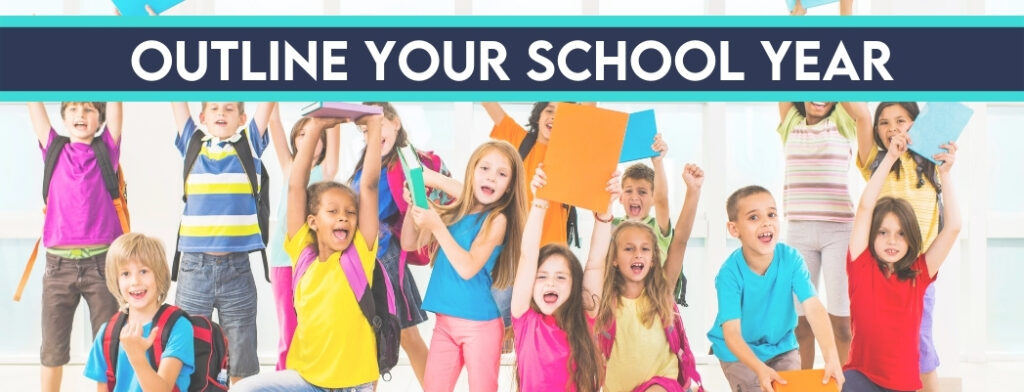
Priority 2: Outline Your School Year
Step 1: Create a Curriculum Map
As we begin to think about and plan for the upcoming school year, it is helpful to start by thinking about the “Big Picture.” What is it that you want and need to cover during your overall time with your students? Creating and utilizing curriculum maps will help you be sure that all concepts and standards for your grade level are covered without having to cram too much in at the end of the school year. It will also help you to better integrate subject areas for a cross-curricular approach to teaching. Learn how to make a curriculum map!
Step 2: Determine Your System for Lesson Planning
The next step is to determine your system for lesson planning. Below are some questions that might be helpful to think about.
Who Will You Lesson Plan With?
This will depend on your school’s culture, among many other factors like schedules and personalities. In my teaching situation, I planned with the one other third grade teacher in my building and this worked out really well. If you can collaborate with other teachers, I recommend taking advantage of this opportunity.
When Will You Lesson Plan?
Think about a time that works best for your busy schedule, as well as the schedules of anyone else you are planning with. Some schools give teachers a planning time during the day. Others have time tacked on at the beginning or end of the school day for teachers to plan. Some teachers opt to plan at home by themselves in their comfy clothes on the couch with a laptop on their lap. Do whatever works for you!
Where Will You Lesson Plan?
If you are planning with others, you’ll be more restricted in where you are planning. If you are planning by yourself, you can plan at home, school, or anywhere else. If you are planning in your classroom, set up a lesson planning area where you have access to everything that you need.
What Will You Need to Lesson Plan?
Before you think about what you will need to lesson plan, determine if you are writing your lesson plans on the computer or by hand. You’ll definitely need your curriculum resources, curriculum map, list of standards, and laptop. It is also helpful to have your lesson planning templates on hand. Check out my weekly lesson plan template and daily lesson plan template!
Step 3: Plan Your Schedule
There are some things that you don’t have flexibility on. Some examples are lunch, recess, and specialists. You’ll want to plug those into your schedule first. Next, you’ll want to get information about how much time you need to teach specific content areas. For example, some school districts require teachers to teach math for 60 minutes per day and literacy 90 minutes per day. Make a list of the amount of time you’ll need to allocate to certain content areas. Then, look at what time blocks are left and where you can fit everything in logistically. Some things to consider are when interventionists and specialists are available. For example, if your Title One reading teachers are only at the school in the morning, then you’ll need to have your reading block in the morning. When you are going through this process of planning out your schedule, consider sitting with your grade level team (if you have one) to all plan it out together.
Step 4: Plan Your Read Alouds
There are so many good books you’ll want to share with your students this year. Look at the schedule you created and identify when you’ll have time for read alouds. Do you plan on sharing a book a day? Do you plan on analyzing a book per week? Think about what aligns with your teaching philosophy and schedule. Next, you’ll want to make a list of books you want to share with your students.
If you need book ideas, browse our blog for lists of our favorites! For example, book lists that we recommend checking out for the month of September include:
- First Day Of School Read Alouds
- Back to School Read Alouds
- Grandparents’ Day Read Alouds
- September 11th Read Alouds
- Constitution Day Read Alouds
- Apple Read Alouds
- Hispanic Heritage Month Read Alouds
- Read Alouds about Substitute Teachers
- Fall Read Alouds
Step 5: Plan for a Substitute Teacher
The next step is to plan for a substitute teacher. To do this, you’ll need to first set up and organize a sub binder. Next, you’ll want to pull together emergency sub plans, read aloud books to leave for a sub, and other substitute teacher activities that don’t require photocopies or technology. Lastly, check out these posts about how to write sub plans and tips for planning for a substitute teacher! Learn more about these steps for preparing for a substitute teacher below!
Set Up a Sub Binder
Unfortunately, you never know when a stomach bug or other emergency’s can pop up! Having your substitute binder prepped and ready for the first day of school ensures that you are starting the school year prepared for anything. Grab these helpful tips and ideas for how to set up and organize a sub binder and these sub plans resources to help you create it!
Assemble Emergency Sub Plans
Some teachers go to school sick or don’t use their personal days because it’s easier than putting together substitute lesson plans. Let’s change that! Put together emergency sub plans before your students arrived so you are prepped and ready. We offer sub plans for grades 1-5. Learn more about them below!
Pull Read Alouds
One of my favorite read alouds to leave for a sub is Miss Nelson is Missing by Harry Allard. It’s a story about an unruly classroom of students and a teacher who finds a creative way to teach them a lesson. The students in Room 207 were the worst-behaved students in the whole school. They were constantly acting up and poor Miss Nelson was unable to teach.
Then one day, Miss Nelson goes missing and Miss Viola Swamp comes into the classroom. She wears an ugly black dress, never smiles, and loads the students up with homework. It isn’t long before the students miss Miss Nelson and start to look for her.
When she returns a few days later, the students are thrilled to see her. They no longer misbehave and act like angels in the classroom. In the end, it is revealed that Miss Nelson was in the classroom all along and she had dressed up as Miss Viola Swamp to teach her students a lesson about being respectful.
Check out these Miss Nelson is Missing activities, as well as this list of other great read aloud books to leave for a sub!
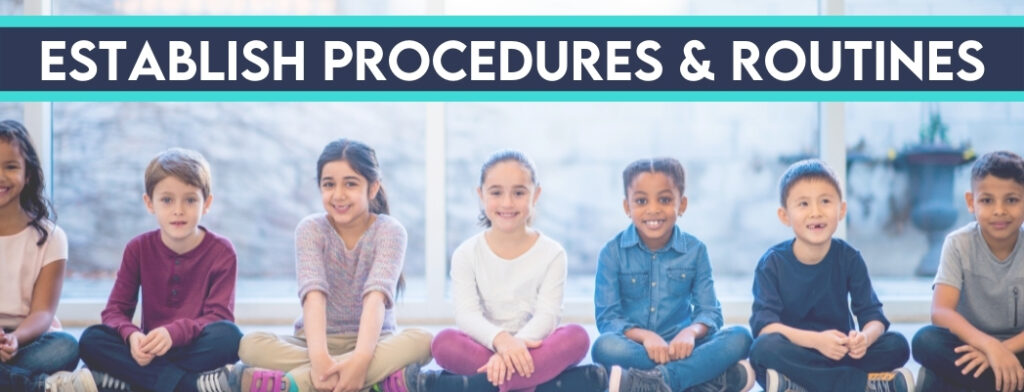
Priority 3: Establish Procedures and Routines
Step 1: Be Positive and Proactive
At the start of the year, you’ll want to focus on being proactive with teaching procedures and routines. Right away you’ll want to teach students what expected behavior looks like during the different parts of the school day before they have the opportunity to display unexpected behavior. You’ll have a much smoother school year if you are proactive rather than reactive to student behavior.
In addition, you’ll want to start the year off in a really positive way and focus on building relationships with your new class of students. Check out these fun and easy ways to connect with students at the beginning of the school year!
Step 2: Identify Procedures & Routines for Your Classroom
Classroom procedures and routines are the systematic ways that you and your students repeatedly complete daily, weekly, or monthly tasks. Having these is how the classroom runs efficiently and effectively. Being able to successfully manage a classroom comes down to two things: planning and consistency. You need to have very clear expectations and a solid foundation for how you want your room to run. That’s not to say you won’t make changes and tweak things along the way, but you need to go into the year having thought through each and every aspect of a school day.
This step of getting ready for back to school involves identifying every procedure and routine in your classroom. You’ll need to think of things ranging from bathroom procedures to how to take lunch count. If this feels overwhelming or if you need support with this, then scoop up my procedures and routines resource for elementary teachers that lists all of the routines you will need to plan for.
Step 3: Create a Schedule & Plan for Teaching Procedures
Your next step is to create a schedule and plan for teaching classroom procedures. You’ll want to teach some procedures and routines on the first day of school like attention getters, hand signals, bathroom procedures, nurse, lunch routine, and snack routine. Others can wait until later in the week like emergency drills, centers, pencils, unfinished work, transitions, and attendance. In addition to mapping out when you are going to teach each procedure, think about how you’ll teach each one. You’ll want to explain the procedure including why it’s important, model it, have a student model it while you narrate it and provide feedback, and then have your whole class practice it.
Step 4: Determine a Positive Behavior System
The next step is to choose a positive behavior management system that you can implement in your classroom. Some teachers opt to go with a bucket filler system, clip charts, filling a jar with pom poms, or another one of the popular classroom behavior management systems. There are tons of different ones to choose from! Check out these other behavior management strategies for inspiration too!
Step 5: Know How You’ll Handle Disciplinary Situations
What happens when your students don’t follow the expectations? What will your response be? It’s important to have answers to these questions before a disciplinary situation does arise and you are standing there not knowing how to react. In this post about improving student behavior, I share the importance of communicating with parents when disciplinary situations arrive. You can decide the best form of communication, but some ideas are a note in the student’s folder, quick email, phone call, behavior log, and communication notebook.
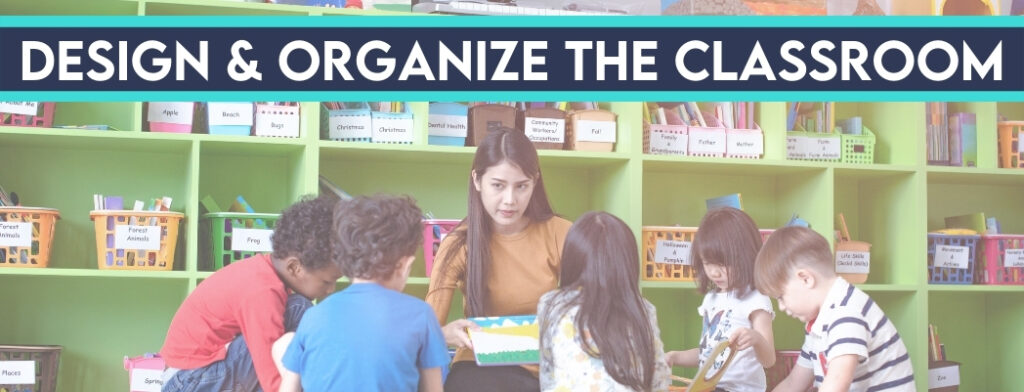
Priority 4: Design and Organize Your Classroom
Step 1: Take Inventory of Your Space
Now it’s time to turn your focus to your learning environment. The first step is to take inventory of your space. This involves making a list of all of the furniture in your classroom. This includes items such as desks, shelves, and easels. In addition, you’ll need to make a list of all of the district-issued items that you’re required to house (science kits, reading anthologies, etc.). Consider taking pictures and measurements of your classroom during this step. This post about how to set up your classroom will have some more helpful related information!
Step 2: Plan a Layout Conducive to Your Teaching Goals
The next step is to plan out your classroom layout by creating a diagram. Sketch out each of your walls as well as an area view as if you were looking down at your classroom from the sky. Include details such as bulletin boards, outlets, and computer hook-ups. Record the measurements you took from the previous step.
When designing your classroom layout, you need to think about how you and your students will use the space. For example, consider where your whole group area, centers, and small group instruction table will be. Each of these spaces should be thoughtfully chosen. When you are choosing a whole group area location, for example, think about things that you cannot move: Outlets, windows, doors, white boards, interactive white boards, and projectors.
It can be very overwhelming to tackle your whole classroom at once. Instead, break it down into zones. Below are some examples of classroom zones: Classroom library, cozy reading nooks, teacher’s desk, student seating, technology station, writing center, listening centers, and student work displays.
You’ll also want to look at your classroom from different lenses. For example, you’ll want to have a literacy rich environment, as well as a numeracy rich environment. Think about how to create a social emotional learning environment.
Step 3: Plan and Prep Wall Displays
You do not need to have your bulletin boards and wall displays done by the first day of school. It’s actually better if you don’t. Students are more likely to use the tools you post (e.g. math word walls) if you slowly build them together over time. For example, instead of throwing up all of your high frequency words at the beginning of the year, consider introducing words weekly and adding them to the board as part of that process.
By the first day of school, I recommend having a planned purpose for each wall display and bulletin board area. In addition, I recommend putting up your bulletin board background and trim so that it creates a nice finished look. An optional add on is putting up your bulletin board headings. If you feel self conscious about it looking incomplete, you could type up and print out a sign that says “student work coming soon” or “coming soon.”
Step 4: Choose Your Organization & Storage Systems
I go in depth on this topic in my Classroom Organization Workshop, but this step involves creating organization and storage systems for your classroom. It doesn’t matter if you are organizing a small classroom or a large classroom, you need to maximize the storage space you have and establish sold organization systems.
My blog is packed with organization and storage system recommendations. Some examples are storage and organization systems for organizing art supplies, organizing math manipulatives, organizing whiteboards, organizing paperwork, and organizing classroom technology.
When you planned out your classroom layout, you broke your classroom down into zones. Consider using those zones you brainstormed to brainstorm organization and storage systems for those spaces. For example, look at your teacher workstation and brainstorm teacher desk organization ideas. Then, find specific classroom storage ideas that work for that space.
Step 5: Decorate Your Classroom with Purpose
Woohoo! You made it to the last step! The last stop on this prepping for back to school train is to decorate your classroom. This process involves 3 steps: Plan, prep, and decorate. One helpful tip is that you’ll want to start by picking a classroom theme and/or classroom color scheme. This will help you create a cohesive learning environment that maximizes student learning. Learn more about how to decorate your classroom!
In closing, we hope you found this blog post about preparing for the back to school helpful! If you haven’t already, be sure to download this FREE back-to-school teacher checklist, which will become one of those teacher checklists that you pull out year after year! We wish you a great start to your school year!

